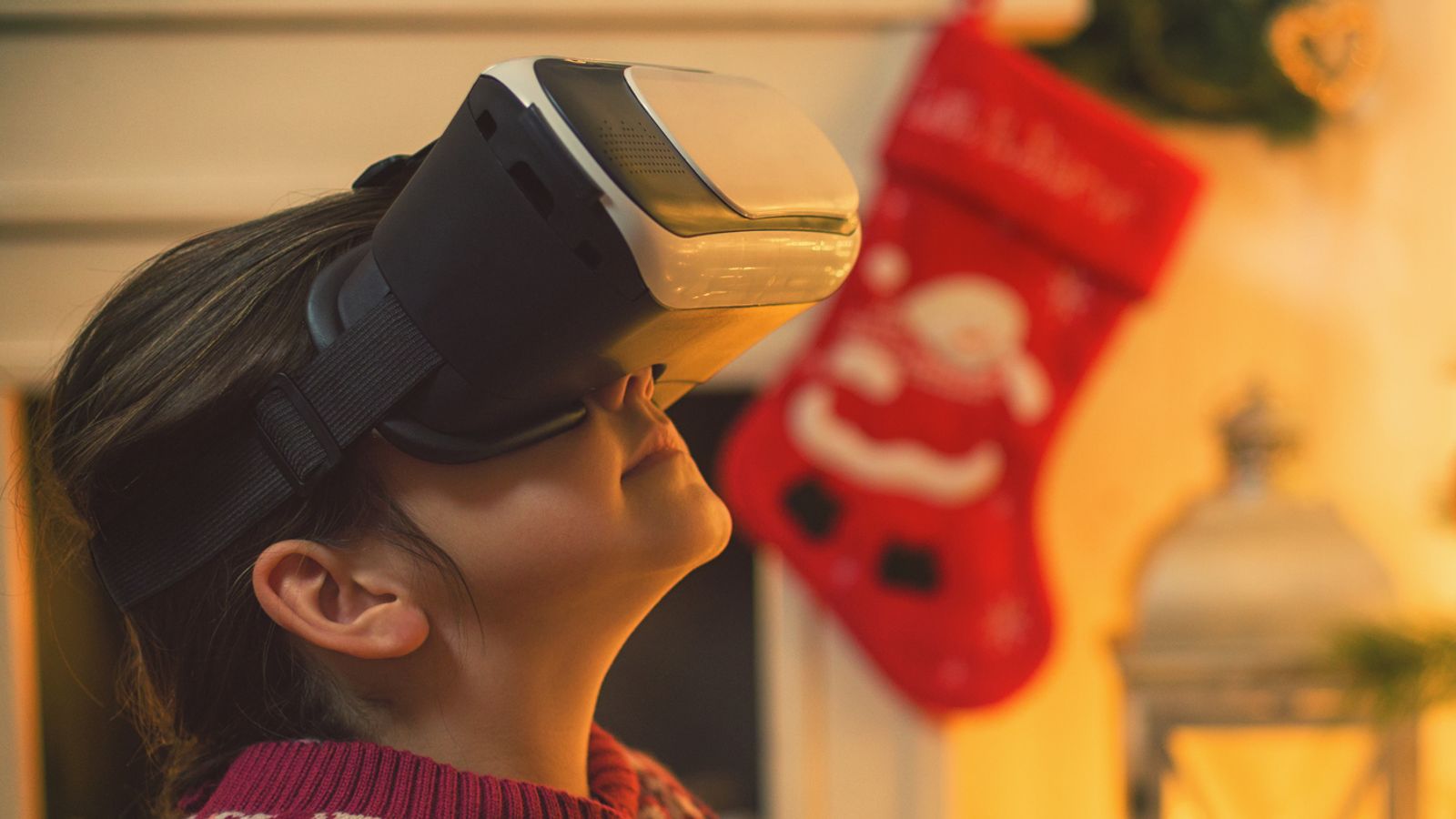Parents are being urged to familiarise themselves with the potential risks of virtual reality (VR), with the increasingly popular headsets having likely found their way on to plenty of Christmas wish lists.
Despite the cost of living crisis, the Meta Quest 2 has been tipped to perform well when it comes to tech gifts this holiday season after recent price drops around Black Friday.
While VR headsets have become more mainstream gaming devices in recent years, the gadgets are also closely associated with what’s known as the metaverse – a broader vision for shared online spaces.
Read more:
Inside the race to the metaverse
It has led to concerns about youngsters being given unchecked access to environments like 3D chat rooms, where people wearing headsets are represented by avatars.
Kate Edwards, acting associate head for child safety online at the NSPCC, said: “Parents who may be thinking about purchasing a VR headset for their child this Christmas need to be aware of the risks young users currently face when given access to what, at this stage, is an unregulated world.”
Polling for the NSPCC shows that while one in five parents would buy a VR headset for their child if they could, more than two-thirds of the public lack confidence that child safety is a priority in the metaverse.
Child’s call reveals potential dangers of VR worlds
The charity said young people had shared their experience of online VR with its Childline counselling service.
One student of secondary school age said: “Recently I met a guy on my VR game, and I’m confused about how I should feel about him.
“He’s really bad, like he always makes sexual comments towards me and asks me to ‘kiss’ him in the game.
“I know that’s messed up, but I love his voice, and he makes me feel like the person I’d rather be.
“Nobody gives me that kind of affection in the real world. I guess that’s why I use VR, so I can look and be like someone I’m not, and it makes me feel good about myself.
“I think I like this guy, but I don’t know if he just likes the character I play as online.”
Tips to keep children safe in VR
To help parents, the NSPCC has compiled a list of tips to help keep children safe when using VR:
• Make the headset a family activity, taking turns and playing with it together
• Take some time to explore the headset yourself before allowing a child to use it
• Familiarise yourself with any safety features, such as parental and privacy controls
• Talk to children about how they use VR and ensure they know not to share personal information
• Set healthy boundaries when it comes to play time
Ms Edwards said: “But this responsibility should not just be on parents. Tech companies must do more to ensure the safety of children on existing products, as well as for ones they roll out in the future.
“And the government needs to deliver a robust Online Safety Bill that accounts for advancements in technology and ensures new devices and platforms are created with child protection at their heart.”
A new version of the long-delayed legislation – designed to protect people online – was presented last month, but greeted with concerns that it had been watered down compared to previous government commitments.
Read more:
Why Online Safety Bill is so controversial
Rowland Manthorpe on the implications of delayed safety bill
Please use Chrome browser for a more accessible video player
Remember physical health as well as safety
It’s also important to be aware of the physical strain VR can place on a child.
Dr Romesh Angunawela, founding partner at OCL Vision, told Sky News it was especially critical to consider the impact long play sessions can have on their eyes.
“Get them to follow the 20:20:20 rule,” he advised.
“Every 20 minutes, they should give their eyes a breather, either by closing them for 20 seconds or by focusing on something at least 20 feet away.”
Given the nature of VR, parents should also be aware of the risks of motion sickness – and the simple perils of not being able to see your surroundings.







